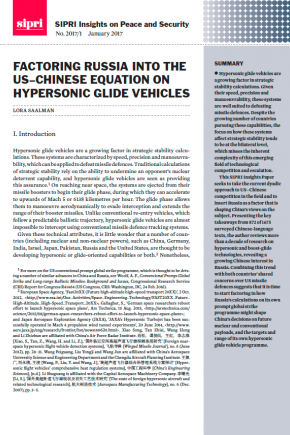Factoring Russia into the US–Chinese Equation on Hypersonic Glide Vehicles
Hypersonic glide vehicles are a growing factor in strategic stability calculations. Given their speed, precision and manoeuvrability, these systems are well suited to defeating missile defences. Despite the growing number of countries pursuing these capabilities, the focus on how these systems affect strategic stability tends to be at the bilateral level, which misses the inherent complexity of this emerging field of technological competition and escalation.
This SIPRI Insights Paper seeks to take the current dyadic approach to US–Chinese competition in the field and to insert Russia as a factor that is shaping China’s views on the subject. Presenting the key takeaways from 872 of 1675 surveyed Chinese-language texts, the author reviews more than a decade of research on hypersonic and boost-glide technologies, revealing a growing Chinese interest in Russia. Combining this trend with both countries’ shared concerns over US missile defences suggests that it is time to start factoring in how Russia’s calculations on its own prompt global strike programme might shape China’s decisions on future nuclear and conventional payloads, and the targets and range of its own hypersonic glide vehicle programme.
I. Introduction
II. The China–Russia strategic nexus
III. Technology: Payload and target
IV. Posture: Response and asymmetry
V. Conclusion

